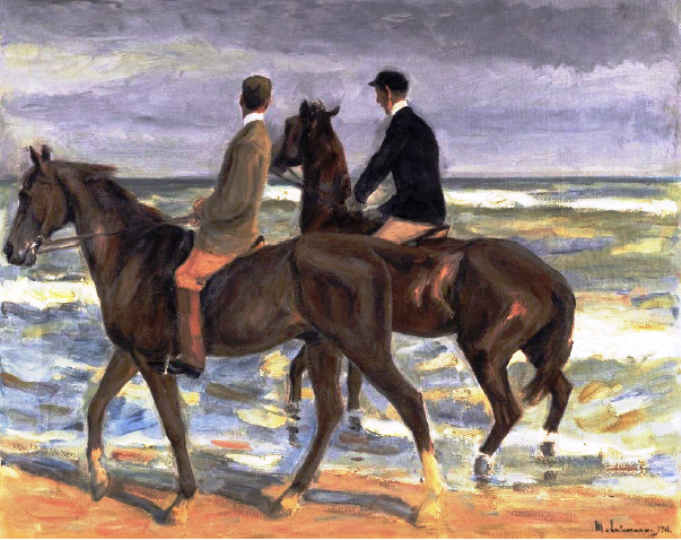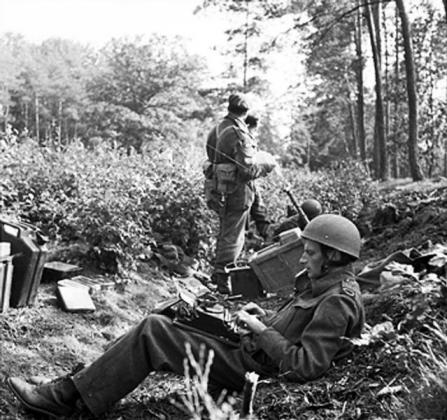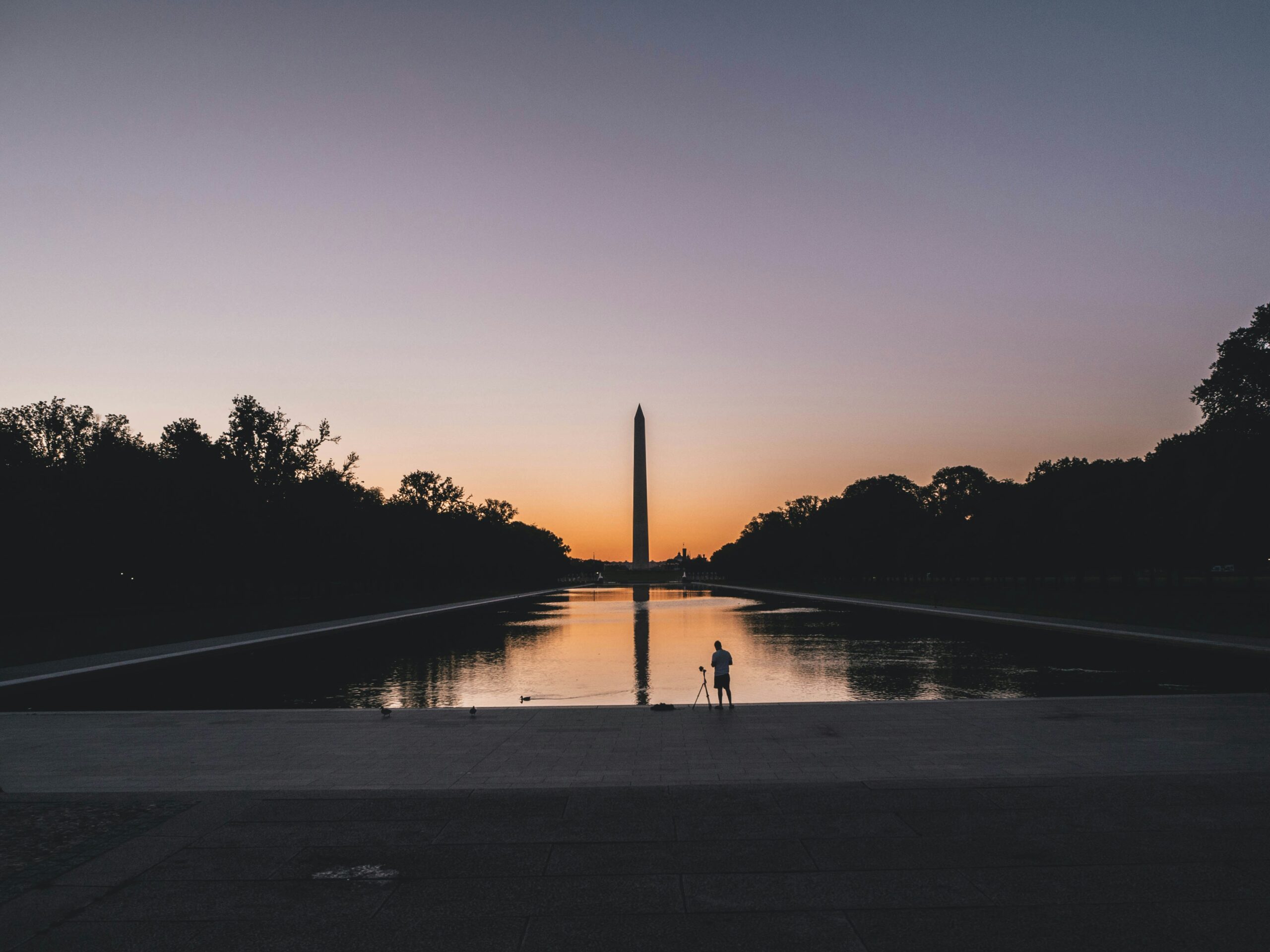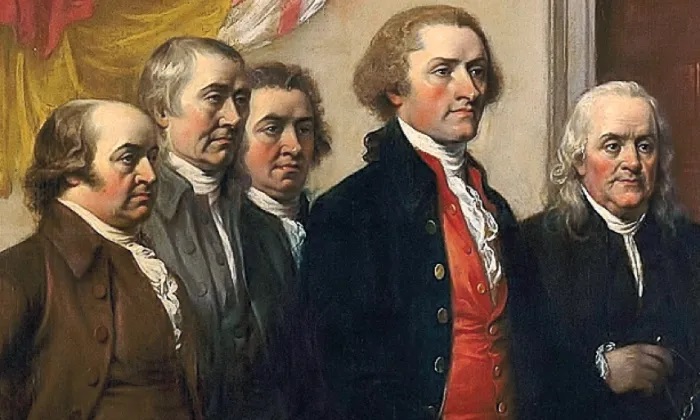On June 24, Sotheby’s, London will be asking one exceptional buyer to spend more than $500,000 for an exceptional painting that has been hidden from the public for decades.

German painter Max Liebermann’s Two Riders on a Beach is one of only two recovered works of art returned to their original heirs after it was discovered hanging in the Munich home of Cornelius Gurlitt. How the painting came to be rediscovered after decades is a story worthy of both a legal and ethics investigation.
“German tax investigators,” The Wall Street Journal writes (May 21), “found the painting three years ago hanging in the Munich home of Mr. Gurlitt, the son of a dealer who helped amass art for a museum that Hitler unsuccessfully planned to build in Austria.
“Mr. Gurlitt was never charged with a tax crime, but the discovery of his 1,200-work trove sparked an international furor and stoked a broader debate about restitution of Nazi art loot. Mr. Gurlitt maintained his innocence, but before his death last year, he bequeathed his trove to the Kunstmuseum in Bern, Switzerland, with the caveat that any works with proven ties to Jewish owners be restituted to their heirs.
“Only a pair of paintings including the Liebermann, which belongs to David Toren, a 90-year-old retired patent lawyer in New York, and several relatives, have been returned. Mr. Toren’s great-uncle David Friedmann originally owned Two Riders before the Nazis looted it in the run-up to World War II.”
A Sotheby’s press release narrates the rest of the back story.
“David Toren, David Friedmann’s great nephew and the only living heir to have seen the painting hanging in his great uncle’s collection before it was seized by the Nazis, recalls:
“ ‘It was the day after Kristallnacht, 9th November 1938. I was aged thirteen and my father had been arrested that morning by the Gestapo. We learned that he would be released briefly because my father was my great uncle’s lawyer, and his presence was required before my great uncle could sign over his estate to the Nazi General, Ewald von Kleist, who wished to acquire it. Arrangements were made with the Gestapo headquarters where my father was held for him to be escorted to my great uncle’s villa and then returned immediately after.
“ ‘Knowing that this would be the last opportunity to spend time with my father before he was detained once more, we packed the warmest clothes my mother and I could find for him to have for his return to the camp, Buchenwald, and beyond. We traveled in the Gestapo’s open-top Mercedes that collected my father and took us to my uncle’s home. I was instructed to wait outside the room in which the paperwork was being signed, and it was there, in the conservatory, that I sat opposite the beautiful painting of the two horse riders on the beach. I had always liked horses, and it was on my uncle’s estate that I had learned to ride, so I very much admired this painting. That was the last time I saw the work.’
“Eventually each of David Friedmann’s properties and art works were lost under the Nazis. He died in 1942 of natural causes. His only child, Charlotte, perished in Auschwitz on the 9th October 1942, and the following year David’s father and mother were deported to the same camp where they too died. David Toren managed to escape on a Kindertransport leaving Germany and grew up in Sweden before moving to New York where he lives now.
“Commenting on the sale of the work, David Toren said: ‘I am ninety years old now and blind, so while the return of the painting after so many years is of huge personal significance, I can no longer appreciate the painting as I did all those years ago in my great uncle’s home. Though I am the only living heir to have seen the painting in my great uncle’s home, I am one of a number of heirs and we have decided to sell. The painting can now pass into a new phase of its story.’ ”
The Acquisition of the Painting by Hildebrandt Gurlitt
“In 1939 the painting was appraised for the Nazi authorities as Jewish -owned property at a value of less than 100 Reichsmarks, and in July 1942, four months after David Friedmann’s death, the Liebermann was sold by the Nazi authorities with the auctioneer of stolen Jewish art Hermann Petschel.
“The painting was acquired at the auction for 1,600 Reichsmarks by Dr Cornelius Müller Hofstede, the executive director of the Fine Art Museum in Breslau (the Schlesischen Museum der bildenden Künste), and placed in the museum. Müller Hofstede had been commissioned by Hildebrandt Gurlitt to seek out works by Max Liebermann and so wrote offering him Zwei Reiter am Strand in August of 1942, though it is unknown whether Müller Hofstede was selling for personal profit or to raise funds for his Museum.
“Dr. Gurlitt is listed in Matthias Eberle’s catalogue raisonné on Max Liebermann’s oeuvre as the next owner of the painting after David Friedmann. In 1945 the painting was seized by the allies’ Monuments Men and held at their headquarters in Wiesbaden, but failing to source any documentation linking the painting to its rightful owner or his heirs since the Nazis had succeeded in destroying much of the documentation relating to David Friedmann – the painting was returned to Hildebrand Gurlitt in 1950.
The Painting’s Restitution
“Thought to have been passed down from father to son, Two Riders on a Beach surfaced from Cornelius Gurlitt’s apartment in Munich in 2012 in excellent condition after having been hidden away for decades.
“Unlike many of the other works retrieved, this painting had been hung on a wall in the apartment, evidently much admired by Gurlitt. Restitution researchers were in no doubt that the collection might well include previously untraced, looted works of art that had been missing for more than seventy years, not least because of Cornelius Gurlitt’s ownership of the collection. This proved to be the case and, alongside a number of other well-documented works that are known to have been confiscated from Jewish collectors and dealers during the Third Reich, David Friedmann’s Liebermann painting was discovered in the collection.
“Cornelius Gurlitt died in 2014, having committed to returning those works from his collection that were demonstrably lost by Jewish collectors during the Nazi era and not restituted after World War Two. Two Riders on a Beach was one of the first two works to have been successfully restituted from the Gurlitt cache, and it was returned to David Friedmann’s heirs in May 2015. All that is known of the other artworks that once formed part of David Friedmann’s collection is the names of the artists, as documentation of them was destroyed over the course of the Nazi regime.”
The discovery and return of the Liebermann painting is a study in commitment, patience and justice. Fifth century Chinese military general and philosopher Sun Tzu wrote, “[The] wheels of justice grind slow but grind fine.”
Max Liebermann’s Two Riders on a Beach will have its first public viewing for the first time in over half a century when it is exhibited by Sotheby’s, London June 19th.
With continued investigation, it will be interesting to see what happens to the additional 1,100 works from the Gurlitt trove.
My thanks to Sandra Burch, VP/Creative Director at Sotheby’s, New York, for bringing this remarkable story to my attention.
Comments









